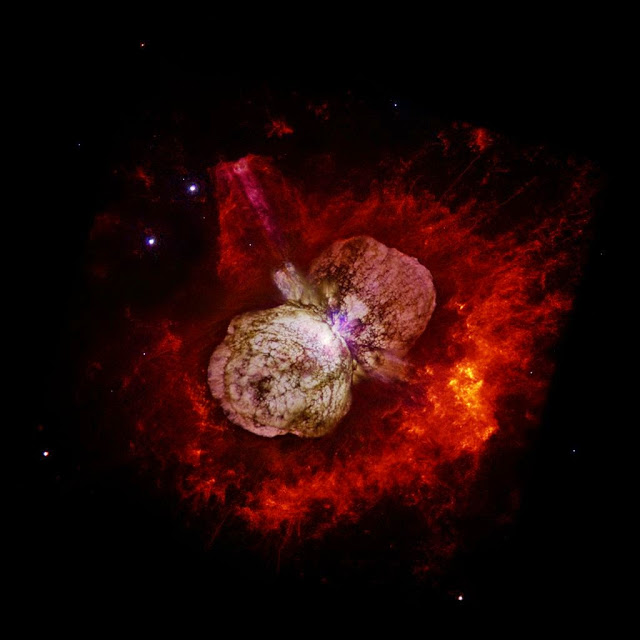| Online: | |
| Visits: | |
| Stories: |

| Story Views | |
| Now: | |
| Last Hour: | |
| Last 24 Hours: | |
| Total: | |
Monitoring Magnetospheres of Massive Stars
Queen’s University PhD student Matt Shultz is researching magnetic, massive stars, and his research has uncovered questions concerning the behaviour of plasma within their magnetospheres.
Drawing upon the extensive dataset assembled by the international Magnetism in Massive Stars (MiMeS) collaboration, led by Mr. Shultz’s supervisor, Queen’s professor Gregg Wade, along with some of his own observations collected with both the Canada-France-Hawaii Telescope and the European Southern Observatory’s Very Large Telescope, Mr. Shultz is conducting the first systematic population study of magnetosphere-host stars.
“All massive stars have winds: supersonic outflows of plasma driven by the stars’ intense radiation. When you put this plasma inside a magnetic field you get a stellar magnetosphere,” explains Mr. Shultz (Physics, Engineering Physics and Astronomy). “Since the 1980s, theoretical models have generally found that the plasma should escape the magnetosphere in sporadic, violent eruptions called centrifugal breakout events, triggered when the density of plasma grows beyond the ability of the magnetic field to contain.
“However, no evidence of this dramatic process has yet been observed, so the community has increasingly been calling that narrative into question.”
Before now, obvious disagreements with theory had been noted primarily for a single, particularly well-studied star. Studying the full population of magnetic, massive stars with detectable magnetospheres, Mr. Shultz has determined that the plasma density within all such magnetospheres is far lower than the limiting value implied by the centrifugal breakout model. This suggests that plasma might be escaping gradually, maintaining magnetospheres in an essentially steady state.
“We don’t know yet what is going on,” says Mr. Shultz. “But, when centrifugal breakout was first identified as the most likely process for mass escape, only the simplest diffusive mechanisms were ruled out. Our understanding of space plasmas has developed quite a bit since then. We now need to go back and look more closely at the full range of diffusive mechanisms and plasma instabilities. There are plenty to choose from: the real challenge is developing the theoretical tools that will be necessary to test them.”
Source:




